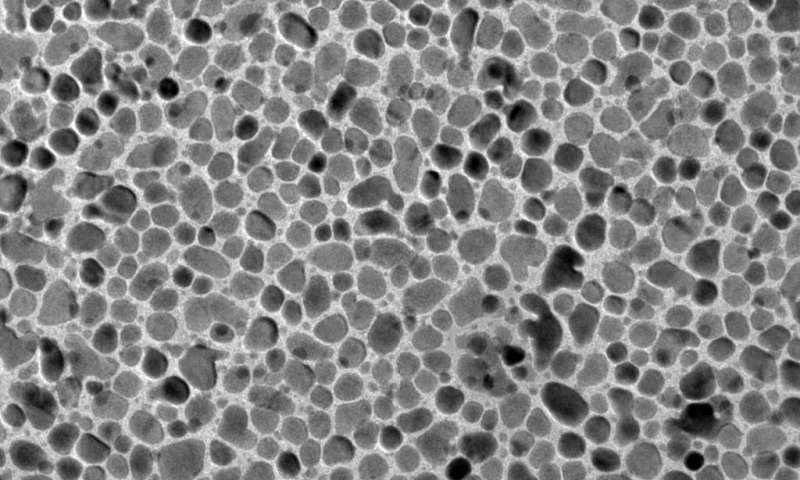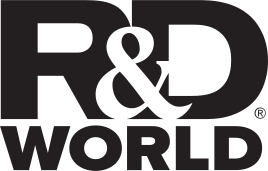
Image of iron-platinum nanoparticles taken with a scanning transmission electron microscope. Credit: Tyler Chase/Stanford/SLAC National Accelerator Laboratory
After revealing more information on how iron-platinum nanoparticles respond to light, researchers may be able to produce the next generation of magnetic data storage devices.
A team from the U.S. Department of Energy’s SLAC National Accelerator Laboratory have discovered that atoms in iron-platinum nanoparticles respond extremely rapidly to brief laser flashes, which could pave the way for new ways to manipulate and control magnetic data storage devices with light.
The researchers combined snapshots from two world-leading ultrafast atomic-resolution cameras—the Linac Coherent Light source X-ray laser and an apparatus for ultrafast electron diffraction (UED).
The laser flashes demagnetized the iron-platinum particles within less than a trillionth of a second. This causes atoms in the material to move closer together in one direction and move further apart in another.
The results also reveal the first atomic-level description of the mechanical strain called magnetostriction, which occurs in magnetic materials when the magnetization is changed. The phenomenon manifests itself in several ways, including the electric hum of transformers.
“Previous models of the properties of iron-platinum nanoparticles did not consider these extremely fast and fundamental atomic motions,” Hermann Dürr, the study’s principal investigator from the Stanford Institute for Materials and Energy Sciences (SIMES), which is jointly operated by SLAC and Stanford, said in a statement. “Although we don’t yet understand the full ramifications of these processes, including them in our calculations could open up new pathways for the development of future data storage technologies.”
Magnetic storage devices are used to record information produced in virtually all areas of the digital world. However, current technologies are approaching their technical limits. For example, hard disk drives can reach storage densities of several hundred billion bits per square inch and similar future devices are not expected to exceed much more than a trillion bits per square inch.
“A very promising approach that could take us there is heat-assisted magnetic recording in hard drives using nanosized grains of materials like iron-platinum,” Eric Fullerton, director of the Center for Memory and Recording Research at the University of California, San Diego, and a co-author of the new study, said in a statement. “In this method, the information is encoded with a nanofocused laser and a magnetic field, or possibly even a laser alone, that switch the magnetization of the nanoparticles.
“These next-generation drives, which can have much larger storage densities, are already being tested in industry and could soon become commercially available,” he added.




